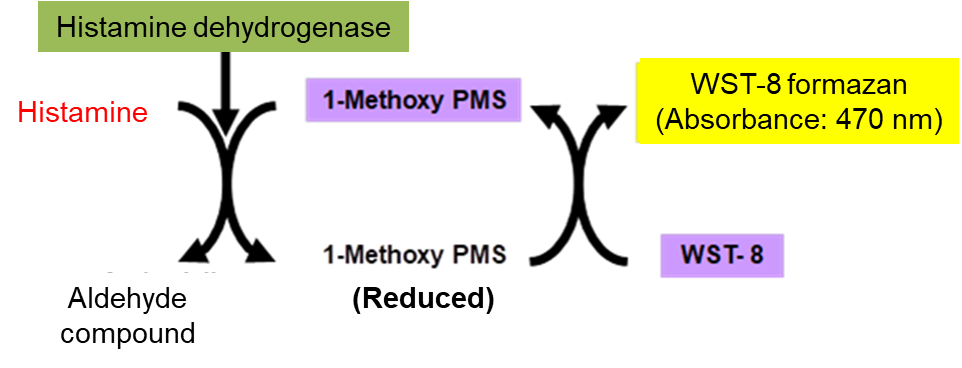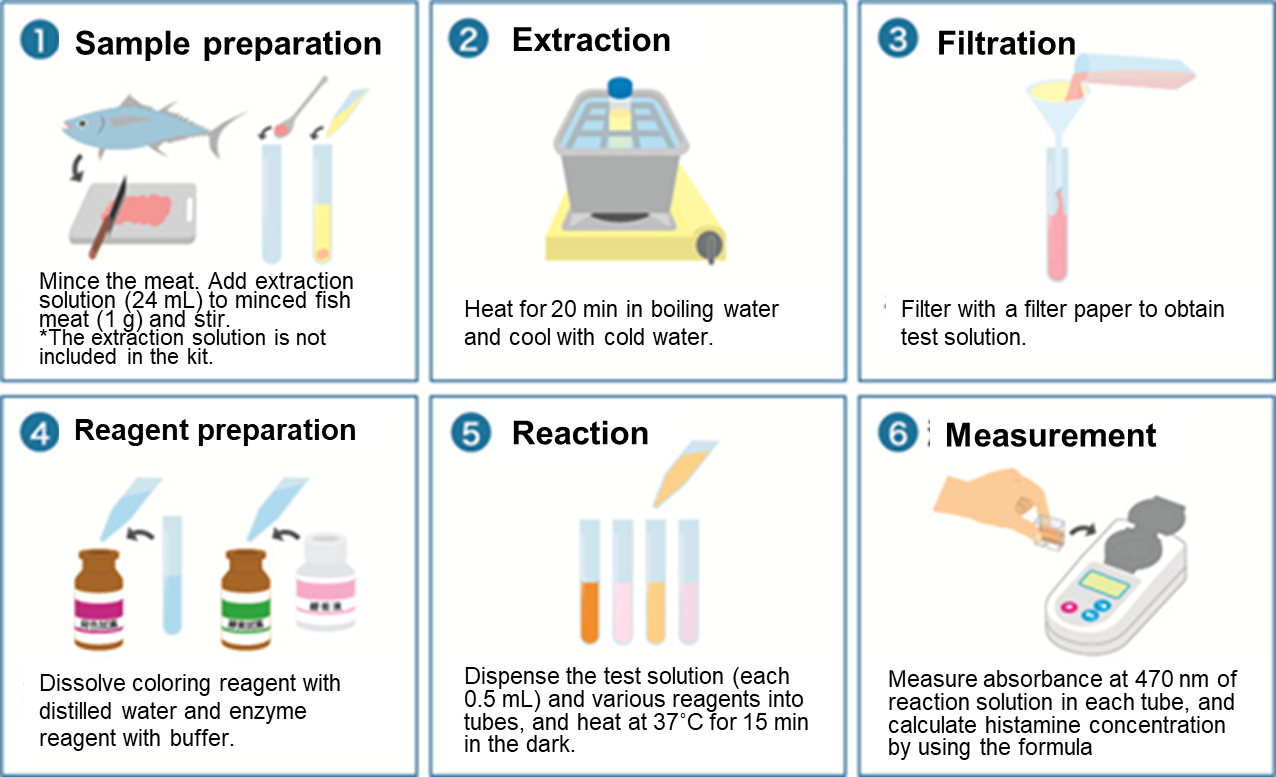Enzyme Colorimetric Kit for Histamine in Aqueous Products "Histamine Test"


Histamine is sometimes present in red-flesh fish, such as bonito, tuna, and mackerel, and a large amount of histamine is produced during the decomposition of fish and shellfish. Consumption of foods containing high concentrations of histamine may cause allergy-like food poisoning. Histamine is regulated in the U.S. and E.U. and by Codex; in Japan, it is controlled based on CCP (Critical Control Point) as a hazardous chemical by HACCP (Hazard Analysis Critical Control Point).
Histamine Test is a test kit that uses the colorimetric method by histamine dehydrogenase.
This test method is easier to operate compared with other methods; results are obtained within 15 min enzymatic reaction. There is a high correlation with HPLC and fluorescence methods, and its reliability was recognized internationally following the acquisition of PTM (Performance Tested MethodsSM) Certification from AOAC-RI (AOAC Research Institute) in April 2018.
- Obtained PTM Certification of AOAC-RI, following evaluation of validity of the histamine measurement method. (License No. 041802)
Features
- Easy: Simply dissolve the reagent and mix it with the sample
The high specificity of the enzyme enables simple and safe analysis without acid or organic solvents. - Rapid: 15 min reaction time
Analytical results for fresh fish can be obtained in less than 1 h, including extraction. - Accurate: Obtained PTM Certification from the international certification body AOAC-RI features a high correlation with official analytical methods.
Principle of Measurement

Protocol
Measurement range: 0.4–6 ppm (converted to fresh fish sample 10–150 ppm)
*When measured using a photometer with an optical path width of 2 cm
Measurement time: About 20 min after dispensing each reagent

Product List
- Open All
- Close All
For research use or further manufacturing use only. Not for use in diagnostic procedures.
Product content may differ from the actual image due to minor specification changes etc.
If the revision of product standards and packaging standards has been made, there is a case where the actual product specifications and images are different.



